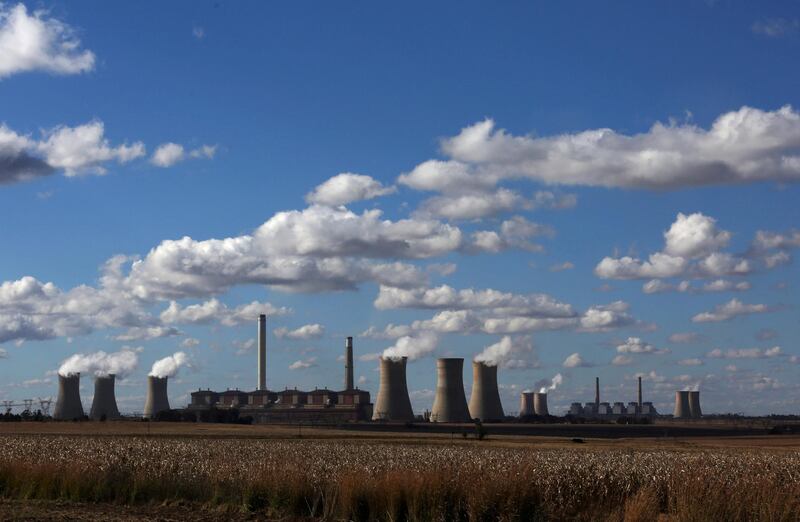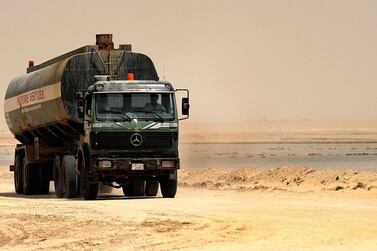For coal miners the world over, the coronavirus outbreak is just the latest disaster to befall the beleaguered industry.
China consumes around 2 billion tonnes of coal a year in electricity and steel production. Half of its coal is mined locally, with rest imported.
But now the shutdown of the country’s ports and industries in response to the coronavirus outbreak has thrown commodity markets worldwide into turmoil.
“This has been very disruptive to supply chains that depend on commodities,” Rodrigo Echeverri, head of research at the Noble Group, told a symposium of coal producers in Cape Town. “There has been a massive drop in coal imports to China.”
China's official manufacturing purchasing managers' index fell to 35.7 in February from 50 the previous month. The non-manufacturing gauge also collapsed to 29.6, its lowest level since records began. Both were well below 50, which denotes contraction.
“Ports are shut down and steel mills are also winding down,” Mr Echeverri says.
For the world’s coal exporters this is a blow, as Asia is increasingly seen as the last bastion for a commodity that is rapidly falling out of favour elsewhere.
Europe, once the heart of the Industrial Revolution that rose on coal, has gone far down the road of transitioning to alternatives such as gas and renewables.
Meanwhile, the UK's last active coal plant will soon close and smokestacks are increasingly becoming a rarity across the English Channel.
For the world's top coal-exporting countries such as Indonesia, Australia and South Africa, a slowdown in the world's biggest market for coal means they will feel the squeeze as they compete for a limited number of customers.
South Africa is the seventh-largest producer in the world, and sells about 72 million tonnes a year. The coal is hauled on 2.5-kilometre-long trains to a vast commodities terminal on the east coast to be shipped across the world.
Now, as countries embrace cleaner energy sources, South African coal producers fear the billions of dollars they invested in the industry will come to nothing.
"We are not climate change denialists," says Mike Teke, chief executive of Seriti Resources, which produces 24m tonnes a year. "We live in Africa and we see its effects every day."
While coal companies largely accept that public concerns should be acknowledged, they say the industry's value to the country also needs to be taken into account.
“We are playing an active role in growing this economy,” he says.
Last year, South African coal production for both local and domestic consumption was valued at 145 billion rand (Dh34.3bn), according to government figures.
Coal was the country's most valuable export, and more than 90,000 people were directly employed in its extraction.
"We should be looking at managing the transition to other forms of energy responsibly," Mr Teke says.
“Coal is an important part of our economy and will be with us for quite some time.”
In the short term, Mr Teke worries coal producers are chasing the same dwindling market. As coal energy plants in the United States shut down, some of the mines that supplied them are looking for new markets abroad.
Last year, India imported 4.1m tonnes of coking coal – a type of coal used in manufacturing steel – from the US for $850m. After US President Donald Trump's visit to India last week, the two countries agreed to increase such purchases.
India's Prime Minister Narendra Modi has long indicated his ambitions to diversify India's energy sources, while also drastically increasing both electricity and energy production. Currently, India uses half a billion tonnes of coal both for energy and steel production each year.
"There will be a bigger basket of energy sources from America, in the near future," India's steel and oil minister Dharmendra Pradhan told CNBC Africa last week.
India is South Africa’s biggest customer, purchasing almost half of the country’s coal exports worth just under $9bn. If US producers turn to offshore markets, it could cut into South Africa's margins.
“The Americans might be closing coal plants, but that doesn’t mean they will close all their mines,” Mr Teke says. “They are out there looking for business.”
For South Africa, this increase in competitors is especially alarming. Most of the country's coal goes to just one customer – Eskom, the country's energy utility that consumes around 115m tonnes a year.
For years the relationship between Eskom and coal producers was cosy. Eskom produces the bulk of the country's electricity, and most of this comes from the 15 coal-fired plants that lie east of Johannesburg.
The government has been working off a plan that extends to 2050, which lays out the country's energy provisions. Previously, the plan called for an increase in renewables but still projected coal demand to range at 127mtonnes a year.
However, a new plan published in 2018 cut down energy sourcing from coal to a mere 38m tonnes annually by 2050. This would mean the number of coal-generating plants will fall from 16 to just two.
"The plan is like an abusive spouse – all joy in the honeymoon period but eventually divorce as reality sets in," says Bongani Motsa, senior economist at the Minerals Council of South Africa. "Unless we take drastic action, coal is dead."
Some suggest technology could help save the struggling coal industry, allowing it to be cleaner. More efficient boilers and carbon capture could provide electricity from coal-fired power plants without deadly emissions, says Professor Rosemary Falcon, director of the Fossil Fuel Foundation in Johannesburg.
“Clean coal is possible, and South Africa should not sterilise its vast coal reserves but use them for energy production.”
Coal-burning technology essentially remains the same as it did during the Industrial Revolution, but modern methods could be introduced to remove particles and gases.
However, energy producers are notoriously conservative and wary of spending billions of dollars on experimental plants.
"Energy companies all like the idea but don't want to be first adapters. Everyone wants to be second in the queue."
In the meantime, the effects of a coal slowdown in China may have an unexpected benefit. Scientists at US space agency Nasa reported that emissions over industrial regions in the country had fallen substantially.
"This is the first time I have seen such a dramatic drop-off over such a wide area for a specific event," says Fei Liu, an air quality researcher at Nasa's Goddard Space Flight Centre, in a statement on the agency's website.
"This year, the reduction rate is more significant than in past years and it has lasted longer," she said.
“I am not surprised because many cities nationwide have taken measures to minimise spread of the virus.”







